Ground Report: Delhi's Mohalla Clinics
'The staff tend to shout at us sometimes when we ask them questions'
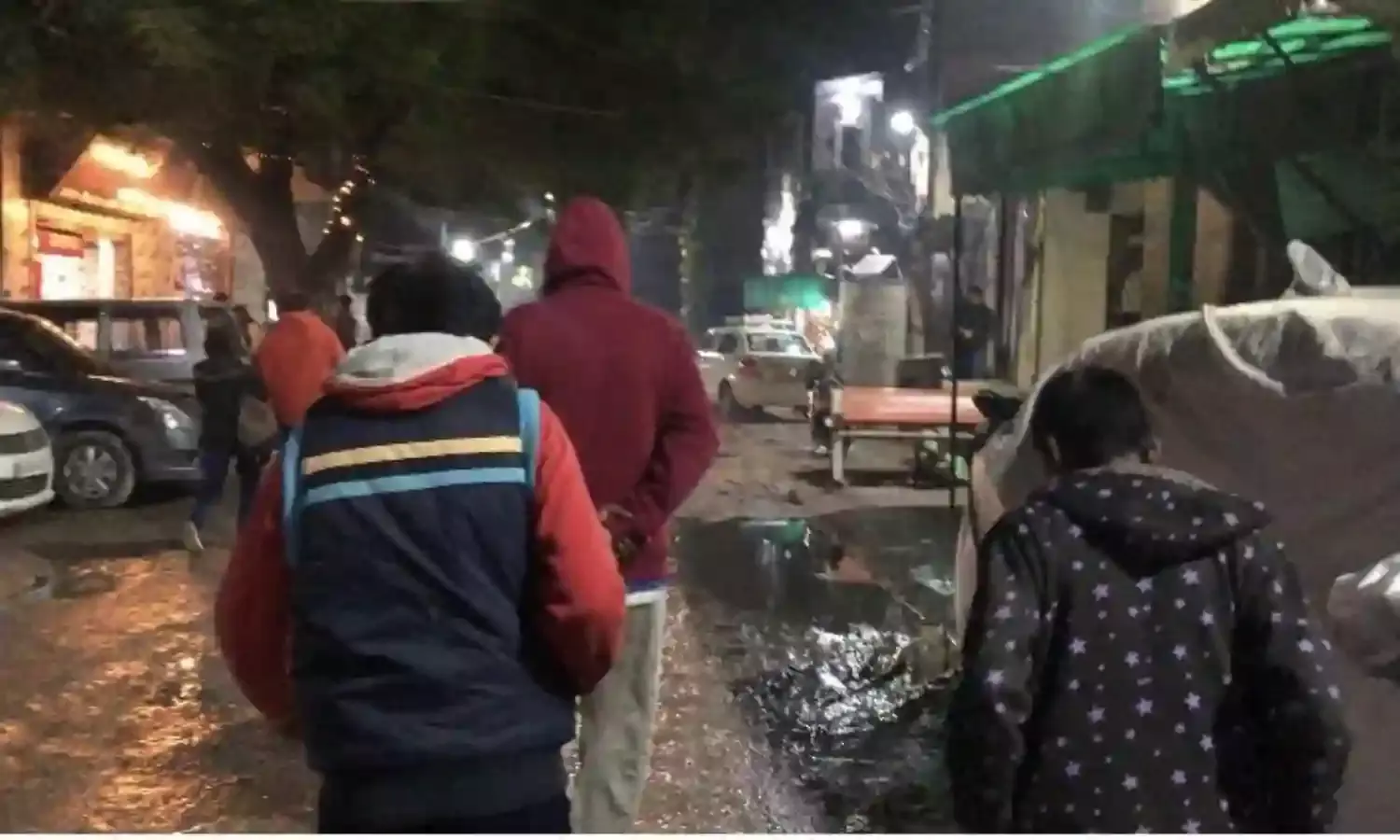
The Delhi Model advertised by Chief Minister Arvind Kejriwal on his cross-country campaigns includes among various components the Aam Aadmi Mohalla Clinics, or common man’s neighbourhood clinics, the first of which was launched in Peeragarhi in west Delhi in 2015.
Today they are found in all 11 districts of the capital, where over 12 million people live. The state government’s Department of Health and Family Welfare describes mohalla clinics as making “quality primary health care services accessible within the communities in Delhi at their doorstep”. These mohallas or neighbourhoods are typically those located near posh colonies in the capital city.
The health department claims 189 functioning mohalla clinics on its website, with 92 located in rented premises and the rest in prefabricated portacabin structures, manufactured and installed by the Public Works Department. Over 200 tests are supposed to be provided free of cost here, along with free medicines to treat a range of health problems.
According to Dr B.B Jena, the doctor on call at a portacabin clinic located inside the Government Girls School in Sector 3, Dwarka, these clinics are meant to provide basic medical care based on standard treatment protocols for illness including fever, diarrhoea, skin problems, first aid for injuries and burns, and dressing and managing minor wounds.
As for medical tests required, “The clinic only collects samples. The samples are sent for testing to an empanelled laboratory for the clinic. Patients are asked to collect the report after a few days.” If the disease and its treatment are complex, the clinic refers patients to public hospitals like the Deen Dayal Upadhayay Hospital in Hari Nagar.
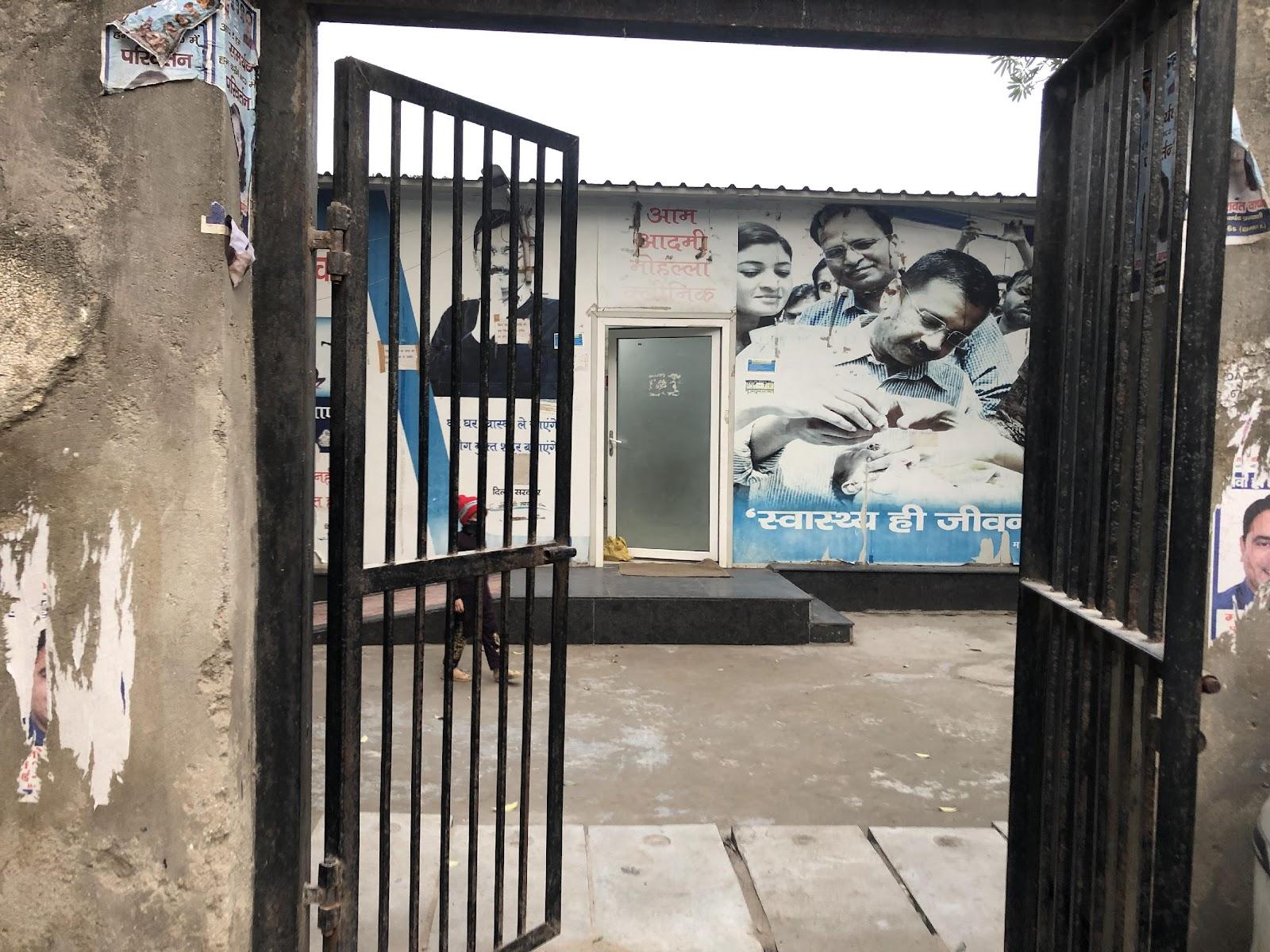
The portacabin mohalla clinic in Sector 3, Dwarka
Most mohalla clinics function from 8 am to 2 pm, though some have a second shift from 3 to 7. According to Dr Jena, formerly a medical superintendent at the Sanjay Gandhi Hospital, “The state government notifies vacancies for clinics located in different districts. Interested candidates can apply to the district in-charge (the Chief District Medical Officer) which is followed by a personal interview.”
While the health department’s website is silent on the eligibility criteria for appointment, Dr Jena says an MBBS degree is the basic requirement. Empanelment lasts a year and only the CDMO can grant an extension. Besides the doctor on call, each clinic has a nurse, a multi-task worker, a pharmacist, and a lab technician.
Priti, a nurse at the Sahyog Vihar (Matiala 1) rented clinic, sat for an exam to be eligible for a nursing job, followed by an interview conducted by the CDMO. She has been working at the clinic since 2019, under Dr Priya Bhowmik. She says about 150-200 patients visit the clinic every day. Locals complain that it is located on a road that is often flooded with sewage water. According to Sanju Devi, patients start lining up as early as 6 am.
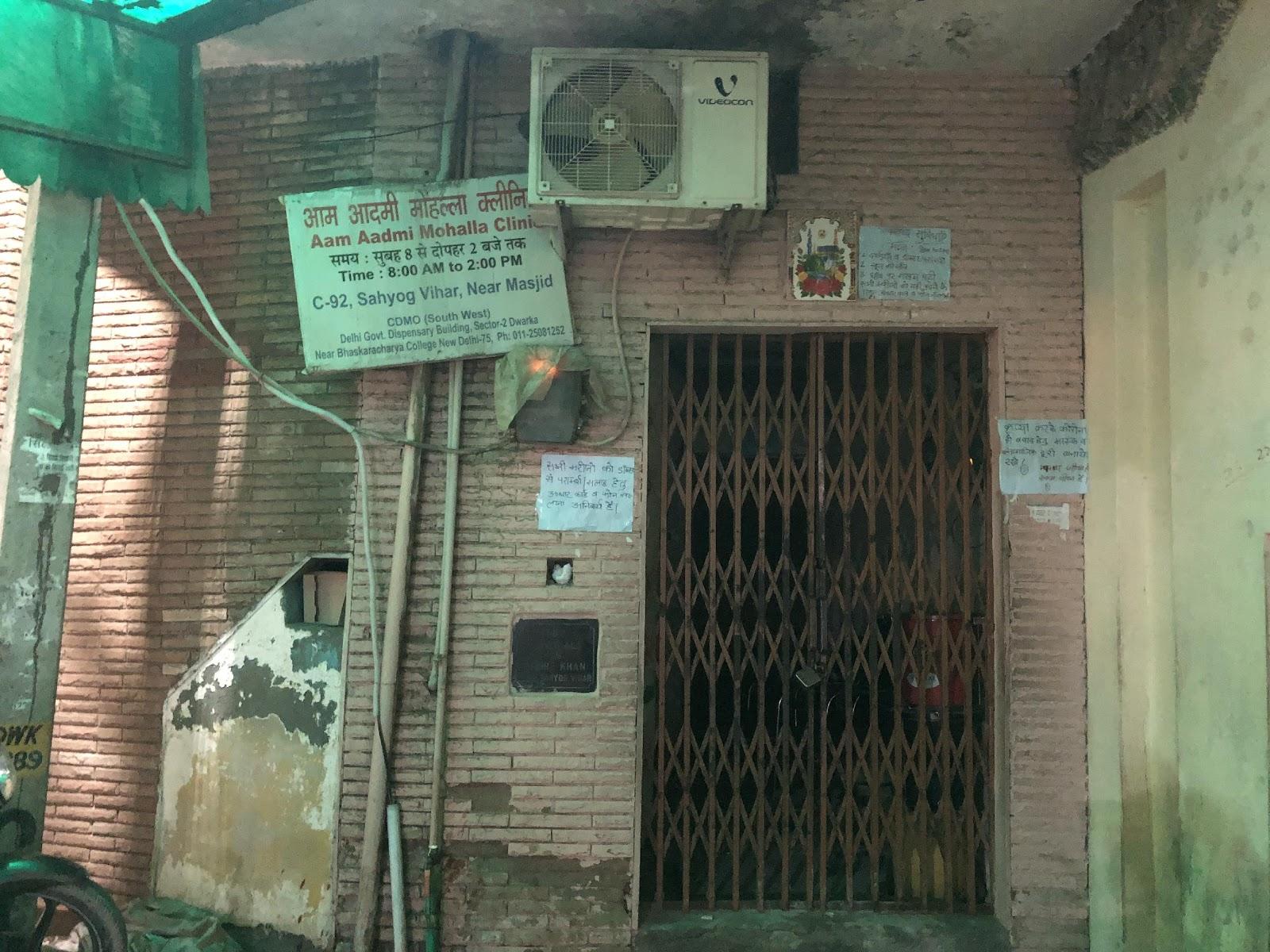
The Sahyog Vihar mohalla clinic in rented premises
The Sahyog Vihar clinic is cramped. A narrow corridor leads up to the doctor’s office. There is a small examination room next to it where the lab technician and nurse carry out inventory. A small bathroom has been carved in one corner of the corridor. There is no waiting area for the patients.
Shanti Kaushik, who has hyperthyroidism, is a regular visitor here. She says the medicines she needs are not always readily available. “I visit every three months for medicines but on several occasions the clinic has run out. I have to buy them from a (private) medical store nearby.” Thyroid medication is expensive, she says, and she is dependent on her husband’s income, who works as a rickshaw puller.
For Rani, another thyroid patient and with chronically high blood sugar, the behaviour of the doctor and the staff is what irks her. “There isn’t enough space to wait your turn. The staff tend to shout at us sometimes when we ask them questions.” The clinic closes after 2 pm, and in an emergency Rani and her family must either visit a neighbourhood “mulla doctor” (a slur for Muslim) or the Akash Hospital in Sector 3.
Shanti Kaushik, left and Rani, right are thyroid patients who visit the clinic every three months
Children in the neighbourhood also visit the clinic, sometimes unaccompanied by their parents or elders.
Pawan, 11, often brings his younger siblings here on his own when they fall ill. “I tell the doctor what is wrong and she gives me the medicines,” he says.
His friend Suraj, 12, has visited the clinic on his own many times when he or his younger brother fell ill. “I can’t always go to the clinic because I have school in the morning,” he explains. “But the medicines have worked every time.”
Suraj and Pawan have visited the clinic on their own when they or their younger siblings fell sick
Kiran, 58, was dissatisfied after visiting the Nishat Park mohalla clinic in Sector 15. She went there after experiencing stomach pain and loose motions. “They gave me only one medicine for pain. The doctor in charge spoke so fast, and when I asked him to slow down he shouted at me.”
The doctor in charge at this clinic refused to speak or give any information about the clinic and its staff. He asked for written permission from the Public Health Department for answering any questions, saying the health department and CDMO had forbidden any doctor in charge from answering any questions from the media or anyone else for that matter, especially during election season.
At the time the Aam Aadmi Party was contesting elections in Punjab, but the effects were being felt in Delhi. The doctor did however allow the ground floor of the clinic to be photographed, which contains a reception area, a stock of medicines on display and a small laboratory.
Mohalla clinic at Nishat Park, Matiyala. Kiran prefers the PUHC Kakrola where the doctors treat her better
Kiran then walked to the Public Urban Health Centre (PUHC) in Kakrola, also in a rented premises a few minutes from Nishat Park. “There is a bigger staff here and the doctors are nicer, they prescribed me medicines for loose motions as well.”
PUHCs were first set up in New Delhi in 2010 and have been expanded at a crawl. Together with the less well equipped mohalla clinics they represent the diversion of public money in most states away from preventive and primary healthcare and towards subsidies for private insurance companies and tertiary hospitals.
Dr Renuka is in charge of the Kakrola PUHC, which has a staff of three doctors, two nurses, a pharmacist, a receptionist, a computer operator and a lab technician. Unlike primary health centres, she explains, “a mohalla clinic does not have the infrastructure to provide for antenatal care and child immunisation. Covid vaccination and testing is also not provided for in most clinics.”
This PUHC also has a separate clinic for adolescents. “We counsel teenagers about sexual and reproductive health and there are counsellors available three times a week between 10 am and 1 pm.” Dr Renuka added that a PUHC has the infrastructure to carry out all the national health programs, such as for leprosy and tuberculosis, unlike mohalla clinics which provide only basic primary care.
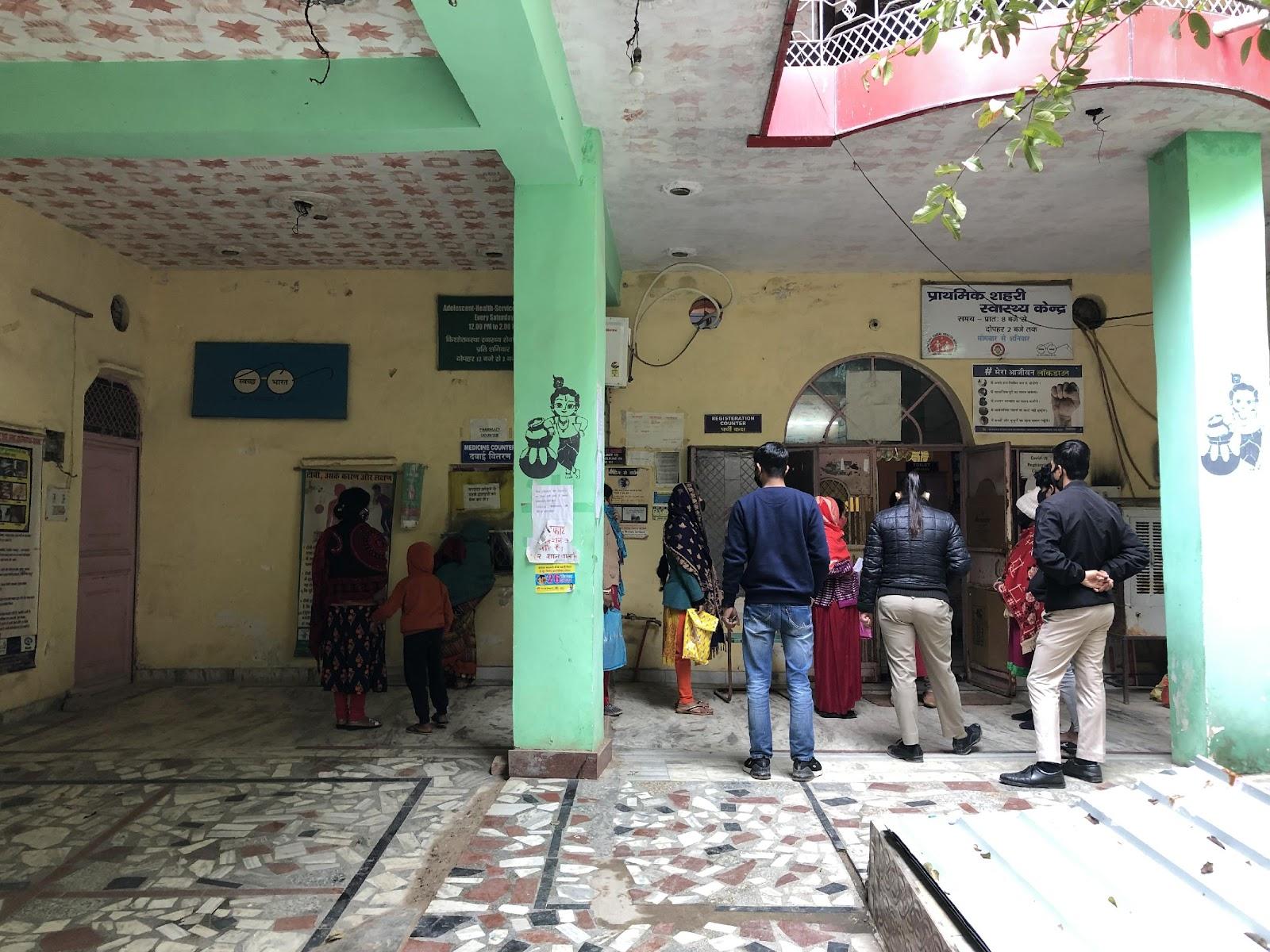
The Primary Urban Health Centre in Kakrola offers covid treatment and vaccination
According to Dr Aditi Bakshi, who runs a clinic in Krishna Nagar, East Delhi and has worked at the Rural Health Training Centre in Najafgarh, PUHCs follow a more comprehensive approach to healthcare.
“A PUHC is open for longer hours and there are doctors available round the clock. There is also an emergency OPD that mohalla clinics do not have. And even though there are facilities like an emergency OPD, most patients would prefer hospitals because they know that hospitals have better infrastructure.”
Dr Bakshi, who has been practising medicine for 15 years, has for the past two years led several health camps in the neighbourhoods of north Delhi, including some that were affected by the targeted communal violence in 2020, which included the police denying people access to ambulances and emergency medical services.
At the camps she says a group of 10 doctors may see close to 500 patients a day for all kinds of ailments (joint pain, cold, chest congestion). She is aware of the limitations and says that health camps are aimed at raising awareness and encouraging residents to seek care more than anything else, and that mohalla clinics serve the same purpose.
The health department website lists some neighbourhood clinics as open which were shut down several months ago. One such is located inside a government school, the Rajkiya Pratibha Vikas Vidyalay, in Sector 10, Dwarka. A portacabin clinic, it was shut down months ago according to the school guard for reasons unknown to him.
Similarly, the Sahyog Vihar clinic is listed on the website multiple times under different names and addresses. It is only after clicking on the links and reading the reviews that one understands it is the same clinic. Another clinic on the website with the address A-25, DK Road, Mohan Garden does not exist. There is an empty plot in its place and residents confirmed that the plot has been empty for several years.
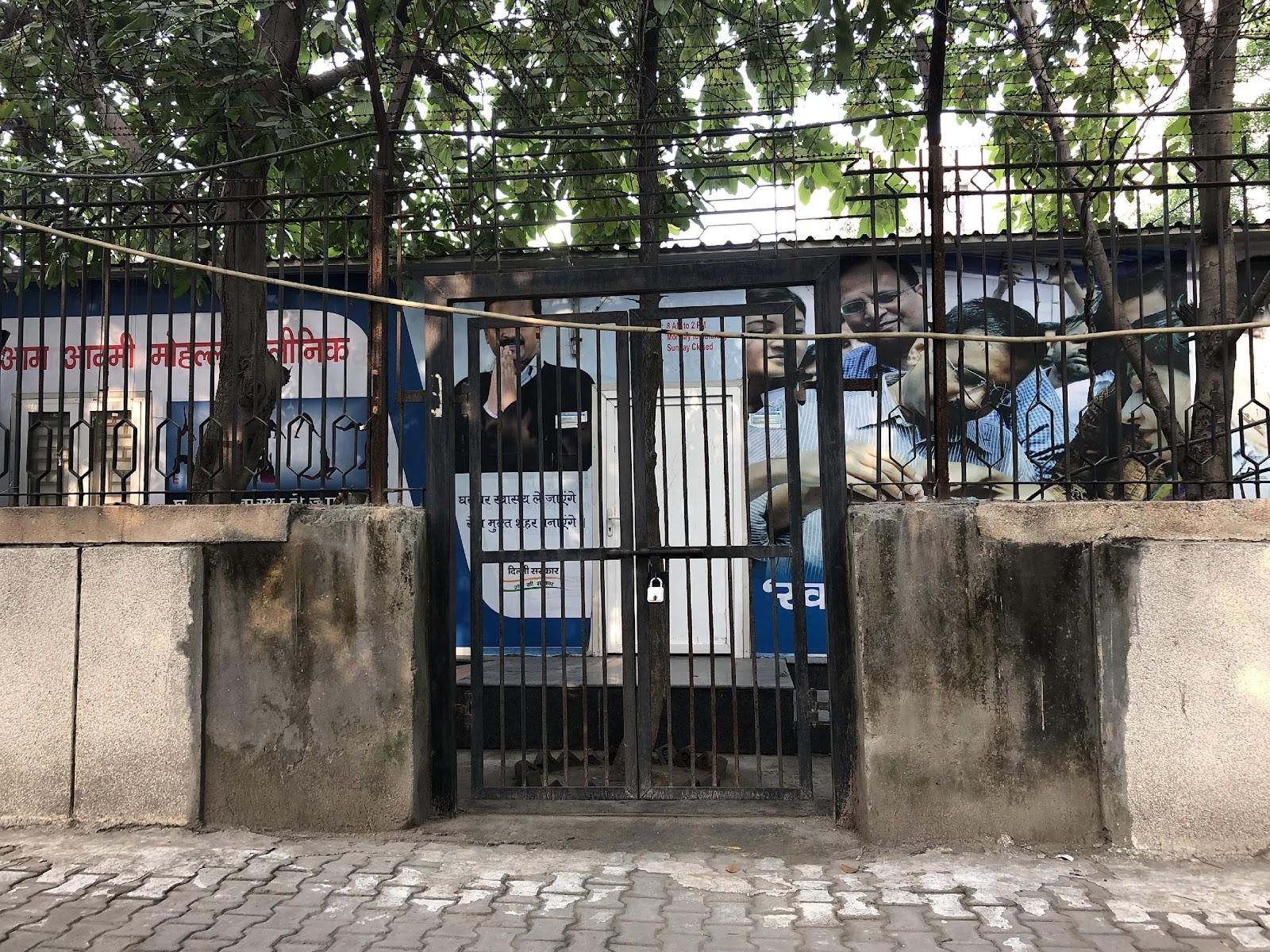
The Sector 10 portacabin mohalla clinic has been closed for months
In Matiala there are six mohalla clinics of which only one is in a portacabin. Sanitation workers have been assigned to each but the residents almost never use the bathrooms. Most of these clinics do not have access to running water. They do not sufficiently cover preventive care such as sanitation, clean drinking water and the importance of hygiene.
The neighbourhoods themselves have not been provided clean paved roads, or a functioning drainage system. The clinics become inaccessible when it rains as the roads get flooded. There are big mounds of garbage in between the connecting neighbourhoods, which also contribute to the health hazards here. The streets are narrow and often sanitation workers are unable to reach these places in their garbage collection vehicles.
Except for the few staff members interviewed above no one was willing to answer any questions. They referred to a directive of the Public Health Department not to speak to the press and asked for written permission. This kind of evasiveness stems from the top. The state nodal officer only provided information that was already available online. Many other questions, about the health outcomes at these clinics, or the eligibility criteria for doctors and staff, went unanswered.
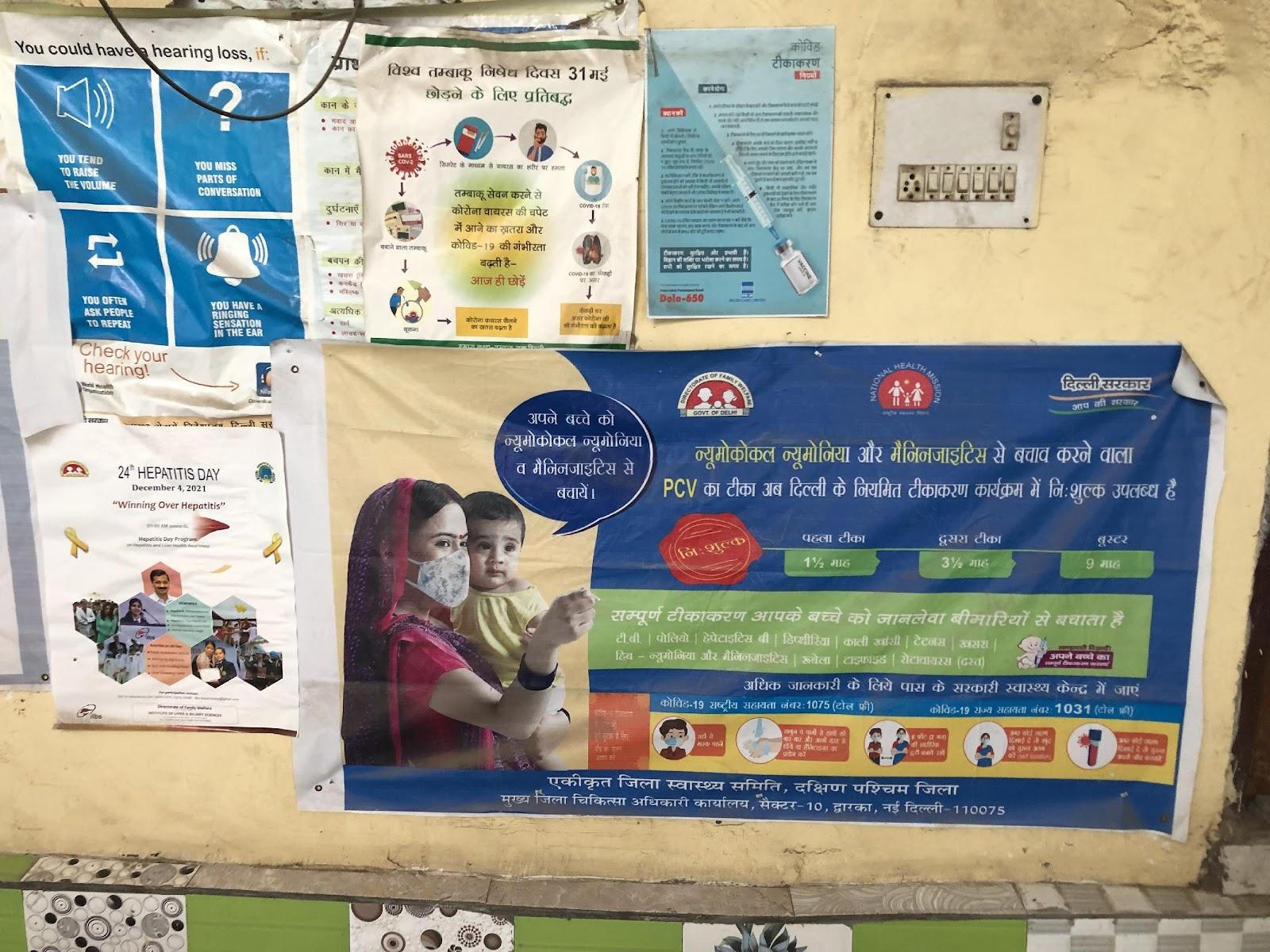
A poster for child immunization inside the Kakrola PUHC
Many patients like Rani and Kiran complained of the rude behaviour of the doctors and staff at the clinics they had visited. Most residents here are not educated enough to understand their ailments and rely on their doctor for an explanation. But they are often mistreated and the staff, perhaps overworked and underpaid, ignores their questions. Any public system of free universal healthcare must take into account how patients and workers are treated.
Further, while primary health centres work to prevent illness and provide medical expertise before the occurrence of a disease, mohalla clinics only enter the picture once patients have fallen ill. In their current design they pay limited attention to public health, sanitation and hygiene and in many cases are failing to provide a good patient experience.
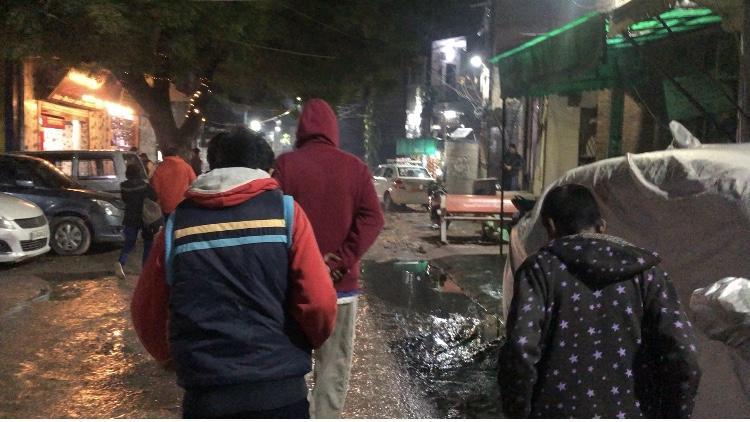
Suraj and Pawan walking to the Sahyog Vihar clinic, which lies on a road flooded with sewage water


